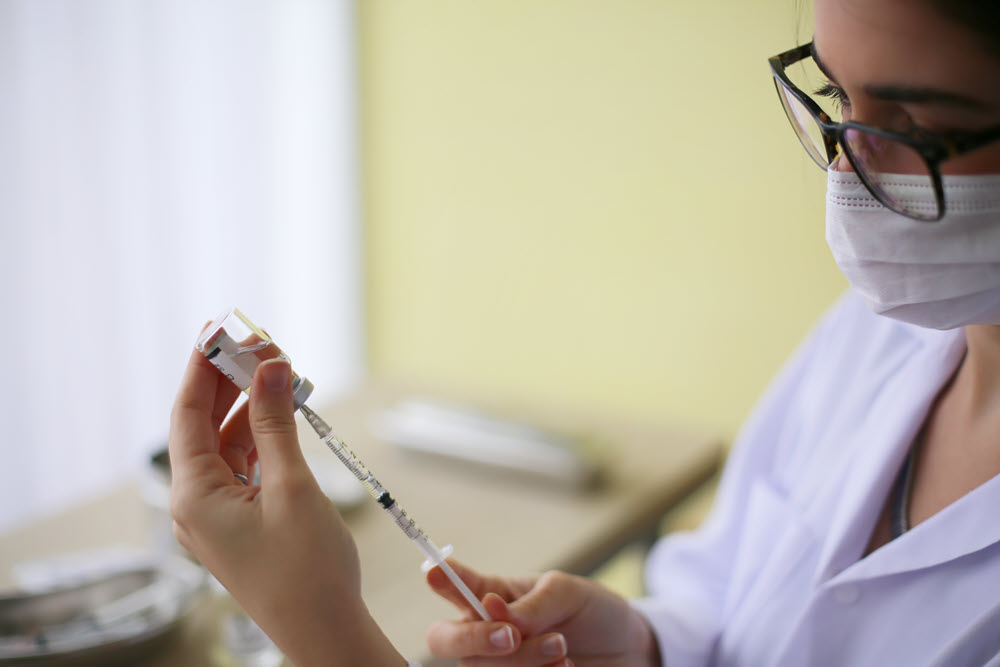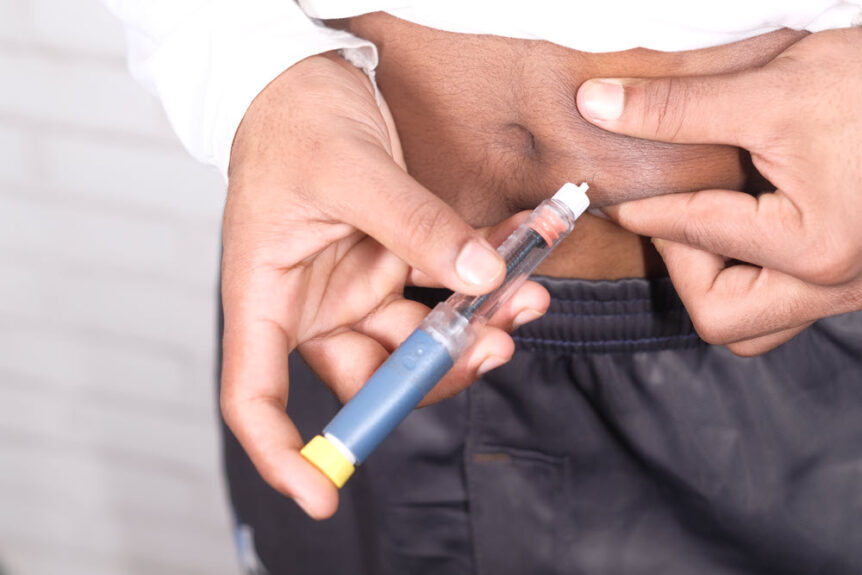A significant development has emerged in the pharmaceutical industry, involving two major players, Novo Nordisk and Eli Lilly. These companies are facing a wave of lawsuits concerning their GLP-1 (glucagon-like peptide-1) medications, commonly used in the treatment of diabetes. GLP-1 medications, known for their efficacy in lowering blood glucose levels and aiding in weight management, have become a cornerstone in diabetes therapy. However, the rising legal challenges suggest a deeper concern about the safety and marketing practices associated with these drugs.
This article delves into the details of these lawsuits, uncovering the reasons behind the legal actions and examining the liability of the manufacturers. As the situation unfolds, understanding the intricacies of these legal battles becomes crucial, not only for those directly involved but also for the wider public who rely on such medications for their health and well-being.
Understanding GLP-1 Medications and Their Market Presence
GLP-1 (glucagon-like peptide-1) medications represent a significant advancement in the treatment of Type 2 diabetes. These drugs work by mimicking the natural hormone GLP-1, enhancing insulin secretion, suppressing glucagon release, and slowing gastric emptying. The result is better blood sugar control and, often, weight loss – both critical aspects in managing diabetes.
Novo Nordisk and Eli Lilly are leading the market in the production of these medications. Novo Nordisk’s offerings include drugs like Ozempic, Wegovy, Rybelsus, Saxenda and Victoza, while Eli Lilly’s portfolio features Trulicity and Mounjaro. These medications have gained widespread acclaim for their effectiveness, transforming diabetes management for many patients.
However, with the increasing adoption of GLP-1 medications, concerns have been raised about their long-term safety and the accuracy of the information provided by the manufacturers regarding potential risks. The balance between benefits and potential adverse effects is a focal point in the emerging legal battles against these pharmaceutical giants. As these drugs continue to play a pivotal role in diabetes care, the scrutiny over their safety and marketing practices becomes increasingly significant.
Rising Legal Challenges Against Novo Nordisk and Eli Lilly
The lawsuits against Novo Nordisk and Eli Lilly began to surface prominently in the past few years, marking a new challenge for these pharmaceutical giants. Initially, a few isolated cases emerged, but soon, a pattern of legal action began to take shape, encompassing multiple jurisdictions and involving a significant number of plaintiffs. These lawsuits have collectively brought a spotlight on the GLP-1 class of medications, particularly focusing on specific brands like Ozempic, Mounjaro, and Rybelsus.
The core allegations in these lawsuits revolve around claims of negligence and misrepresentation by the manufacturers. Plaintiffs accuse Novo Nordisk and Eli Lilly of failing to adequately test their products for long-term safety, neglecting to warn patients and healthcare providers about potential severe side effects, and misrepresenting the benefits and risks of their GLP-1 medications. These allegations suggest that the companies prioritized market dominance over patient safety, leading to adverse health outcomes for some users.
One of the primary grievances relates to severe gastrointestinal issues, including, but not limited to, the development of gastroparesis or gastroparesis-like symptoms in patients using these medications. Other allegations point to an increased risk of thyroid cancer, pancreatitis, and cardiovascular issues, which were allegedly downplayed or not fully disclosed by the manufacturers in their product information and marketing campaigns.
The legal claims are bolstered by patient testimonies, medical records, and in some cases, internal documents from the companies themselves. The number of lawsuits has been growing, indicating a widespread concern among patients and a mounting challenge for these pharmaceutical companies. The outcome of these legal battles could have far-reaching consequences, not only for Novo Nordisk and Eli Lilly but also for the regulatory landscape of drug approval and monitoring.
Delving into the Legal Accusations

Exploring Deceptive Marketing Claims
The heart of the lawsuits against Novo Nordisk and Eli Lilly lies in the claim of deceptive marketing practices. These allegations, if substantiated, reveal a concerning pattern in how pharmaceutical companies may sometimes operate within the grey areas of marketing ethics and legal boundaries.
1. Exaggeration of Efficacy: One of the primary allegations is that both companies overstated the effectiveness of their GLP-1 medications. Marketing materials, advertisements, and promotional campaigns are said to have highlighted the benefits of these drugs in controlling diabetes and aiding weight loss, while not sufficiently emphasizing that these outcomes vary significantly among individuals. This selective portrayal could create unrealistic expectations among patients and healthcare providers.
2. Downplaying Risks and Side Effects: A critical component of the lawsuits is the accusation that Novo Nordisk and Eli Lilly did not adequately communicate the potential side effects and risks associated with their GLP-1 medications. This includes not only common adverse reactions but also more severe complications that might arise from long-term use or interactions with other medications. Failure to provide comprehensive risk information compromises patient safety and informed consent.
3. Misleading Advertising and Promotional Tactics: The lawsuits also scrutinize the advertising strategies used by these companies. Allegations include the use of misleading language, selective quoting of clinical studies, and the promotion of off-label uses without sufficient scientific backing. Such tactics can mislead not only the general public but also healthcare professionals, influencing prescribing behaviors.
4. Targeting Vulnerable Consumer Groups: Another point of contention is the targeting of specific consumer groups, such as those struggling with obesity, without full disclosure of the limitations and suitability of these medications for their condition. This practice raises ethical questions about exploiting vulnerable individuals’ needs and concerns for profit.
5. Influence on Healthcare Providers: There are also claims that these companies might have unduly influenced healthcare providers through incentivized promotions, potentially skewing the unbiased medical judgment in favor of their products.
The impact of these alleged deceptive practices is far-reaching. It not only affects individual patients who might have been misled but also undermines the trust in the healthcare system. It leads to a situation where treatment decisions might be based on skewed information, thereby compromising patient health and safety.

Navigating the Legal Terrain: Understanding the Basis for Liability
The lawsuits against Novo Nordisk and Eli Lilly for their alleged deceptive marketing practices of GLP-1 medications are grounded in several legal principles. These principles are essential to understanding the potential liability of the manufacturers and the possible outcomes of the legal proceedings.
1. Violation of Consumer Protection Laws: At the core of these lawsuits is the assertion that the companies violated consumer protection laws. These laws are designed to safeguard the public from unfair, deceptive, or fraudulent business practices. By allegedly misrepresenting the efficacy and risks of their products, Novo Nordisk and Eli Lilly could be seen as having engaged in deceptive practices that misled consumers and healthcare providers, a violation that could result in significant penalties and mandates for corrective actions.
2. Breach of Pharmaceutical Marketing Regulations: Pharmaceutical companies are bound by strict regulations regarding how they can market their products. These regulations require transparent communication about a drug’s benefits and risks. The lawsuits claim that Novo Nordisk and Eli Lilly breached these regulations by allegedly providing incomplete or biased information about their GLP-1 medications.
3. Accountability for Patient Safety: The legal actions also emphasize the responsibility of pharmaceutical companies to prioritize patient safety. This includes providing comprehensive information about a drug’s potential side effects and interactions. Failure to do so could be construed as negligence, making the manufacturers liable for any harm caused to patients due to inadequate information or misleading marketing.
4. Financial Compensation and Corrective Measures: Plaintiffs in these lawsuits are seeking financial compensation for damages suffered due to the alleged deceptive practices. Furthermore, they are calling for corrective measures, such as changes in marketing practices and more stringent monitoring of pharmaceutical advertising.
The outcome of these lawsuits could have significant implications for Novo Nordisk, Eli Lilly, and the pharmaceutical industry at large. It could lead to more stringent regulations on drug marketing and enhanced scrutiny of pharmaceutical advertising practices, setting a precedent for transparency and ethical marketing in the healthcare sector.
Who Qualifies for the Ozempic Lawsuit?
The lawsuits against Novo Nordisk and Eli Lilly are more than legal battles; they represent the struggles and pain of patients who allegedly suffered adverse effects from GLP-1 medications. These individual stories paint a vivid picture of the potential human cost associated with pharmaceutical negligence and misrepresentation. Patients have reported severe and debilitating symptoms, including extreme gastrointestinal distress, unexplained pancreatitis, and other serious health complications, which they attribute to their use of these medications.
The implications of these lawsuits extend beyond the individuals involved, impacting the broader healthcare system and patient trust. If the allegations are proven true, it could lead to increased scrutiny of pharmaceutical companies and their practices. This situation raises important questions about the drug approval process, the rigor of clinical trials, and the adequacy of post-marketing surveillance in identifying long-term drug safety issues.
Currently, individuals who suffered extreme side effects after taking Ozempic or other GLP-1 medications that caused at least overnight hospitalization can participate in the lawsuit. The most common severe side effects that are cited in the lawsuit are:
- Severe cyclic vomiting
- Gastroparesis or stomach paralysis
- Bowel or intestinal blockage
- Deep Vein Thrombosis (DVT)
- Ileus
- Pancreatitis
Reflecting on the Implications and Future Directions
The lawsuits against Novo Nordisk and Eli Lilly regarding the marketing of GLP-1 medications highlight critical issues within pharmaceutical marketing and consumer protection. These legal challenges serve as a crucial reminder of the ethical responsibilities that pharmaceutical companies hold towards their consumers and the healthcare community.
The outcomes of these cases could potentially reshape marketing practices, enforce greater transparency, and reinforce the importance of accurate information dissemination in the healthcare industry. As these legal battles progress, they will undoubtedly contribute to a broader discussion on the balance between corporate interests, patient safety, and the integrity of healthcare practices.
